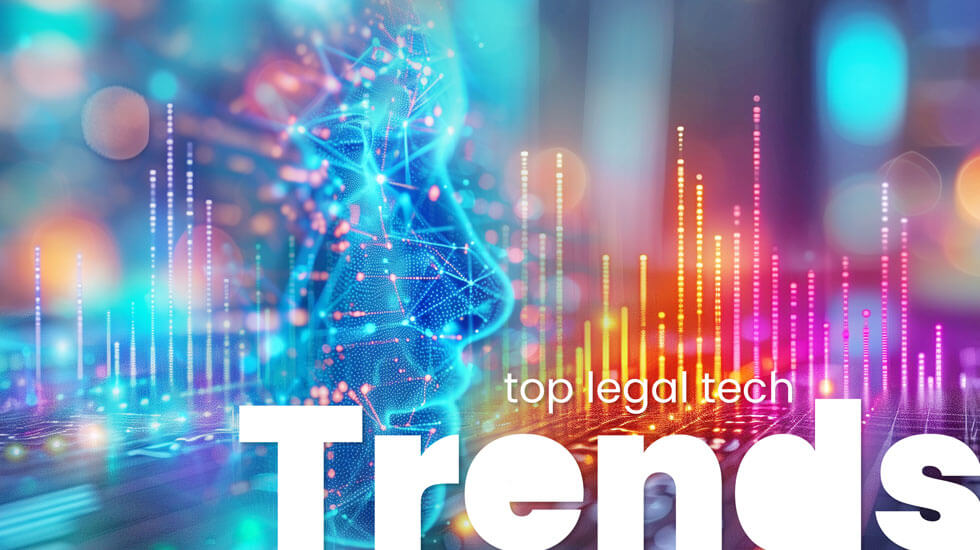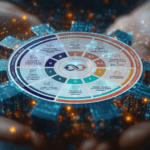
Top Tech Trends In The Legal Field In 2024
Recent technological advances have become a benefit that makes legal tasks easier and changes how cases are run Let’s look more closely at the top legal software technology trends that will change the legal field in 2024. These trends will give lawyers information and strategies that will empower them to stay on the cutting edge of new technology and better service their clients.
The growing use of Artificial Intelligence (AI) and Machine Learning (ML) in the law field is one of the most important trends for 2024.
Legal research powered by AI: AI algorithms are changing the way legal research is done by searching through huge files to find very relevant case law and precedent information quickly. This tool automates the process of looking at huge amounts of data, which speeds up the study of documents in court cases. This cuts down on litigation costs and frees up time for further hearings.
Contract Analysis: Tools that use AI analyse contracts automatically, reading and pulling out important terms and clauses. This makes the due diligence and contract management processes much faster.
Predictive analytics: AI and ML models can guess how a case will turn out, which helps lawyers make decisions based on facts and make the best use of their litigation tactics.
Blockchain technology is making waves in the legal world because it makes deals safer and far more transparent. Blockchain-powered smart contracts are simplifying common legal tasks, cutting out the need for middlemen and lowering the chance of mistakes. Also, cloud-based collaboration tools and document management systems are changing the way legal teams work together by making it easier to share documents and talk to each other without compromising data protection.
Smart Contracts: Legal agreements that are powered by blockchain are automatically carried out, cutting down on the need for middlemen and the chance of mistakes during execution. Blockchain also improves data security and integrity, which is very important for legal documents and private client data.
Transparency: The public and unchangeable record of blockchain makes sure that legal transactions are honest, which lowers the risk of disputes.
Natural Language Processing (NLP) and Chatbots for Client Interaction: NLP-powered chatbots offer 24/7 client help, answer common legal questions, and make appointments, all of which make clients happier.
Automated Document Generation: Legal papers and contracts can be written by NLP-powered tools that use predefined templates. This saves time and cuts down on mistakes.
Legal Transcription and Summarization: NLP can automatically transcribe and summarise legal papers, which speeds up and improves the efficiency of finding information.
A new trend in the law field is to use visual representations of data to make decisions. Lawyers can now use data analytics tools to make smart choices, predict how cases will turn out, and make the best use of their resources. Data visualisation tools turn complicated legal data into charts and graphs that are easy to understand. This makes it easier to communicate and persuade others in a court or hearing situation.
VR is used to recreate crime scenes and accident scenes so that judges and jurors can have more realistic experiences that help them understand the cases better. This, in turn, allows for better presentations in court where AR adds digital information on top of real objects, which makes presentations more interesting and generates more convincing arguments.
Legal teams, customers, and outside partners are all moving towards cloud-based technologies like Microsoft Azure, Google Cloud, and Amazon AWS. These technologies make it easy to share documents and work together efficiently. They can also have full power over the system for sharing and managing documents, including the ability to track changes and make new versions.
This helps keep the data accurate and builds trust between the parties. Law-based officials may be able to streamline their work, provide better customer service, and stay competitive in a legal field that is always changing if they follow these software technology trends.
With more and more attention being paid to data privacy and laws like GDPR and CCPA, it is important to have cybersecurity tools to protect private client data. Now, tech is making it easier to find threats and encrypt data. This advanced threat monitoring software helps find and reduce cybersecurity threats, which keeps your data safe from hacks and data breaches. Encryption and tight access controls protect client privacy and make sure that data protection rules are followed.
Managing deadlines is an important part of running a legal business. Because of this, lawyers have started to use tools for managing projects. Not only might these technologies help keep an eye on legal teams more effectively, but they may also help handle projects, deadlines, and case progress more efficiently, leading to higher productivity.
These tools help staff figure out how to best use their resources and distribute them. They’re also more interesting because they come with client sites that make it easy to work together and talk to each other.
The new software trends will generate innovations in your legal business that can make your practice more efficient, save you money, and give you an edge over other lawyers who offer the same services. While the legal field has traditionally been conservative, accepting these changes can help you better meet the changing needs of your clients and navigate the complicated world of modern legal practice.
Not only should you use the newest technology, but you should also make sure that it fits with your specific goals and aims in your legal practice. This is the key to successful implementation. Think about how you could use these new software features to speed up your work, build better relationships with clients, and provide better law services in 2024 and beyond. To grow your legal practice in 2024, contact Merchant Capital today and fund your law firm’s tech upgrade in the next 48 hours.






